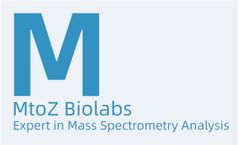Disease Process Articles & Analysis
35 articles found
Investigating the thymus of rats provides valuable insights into immunological processes and disease mechanisms. One of the most effective methods for preserving and studying the cellular architecture of the rat thymus is through the use of Formalin-Fixed Paraffin-Embedded (FFPE) blocks. ...
However, the same proteolytic activity that protects against pathogens can, when unregulated, contribute to tissue injury, autoimmune inflammation, and chronic disease progression. In recent years, recombinant ELANE protein has become an indispensable tool for researchers studying neutrophil function, protease regulation, and disease mechanisms, particularly in ...
Combined with innovations like metabolic flux assays and comprehensive metabolomics services, these technologies provide researchers with unparalleled insights into the metabolic networks that drive cellular function and disease processes. What Is Metabolic Flux Analysis (MFA)? Unlike traditional metabolomics, which primarily quantifies the concentration of ...
Together, these studies offer a deeper understanding of cellular processes, disease mechanisms, and therapeutic potentials. The Importance of Exosome Lipidomics and Metabolomics The term lipidomics refers to the study of lipids in biological systems, whereas metabolomics involves the profiling of metabolites, the small molecules generated during metabolic ...
Stable cell lines are an indispensable tool in the realm of biomedical research, playing a crucial role in advancing our understanding of cellular processes and disease mechanisms. Unlike primary cells that have a limited lifespan, stable cell lines offer a consistent and renewable source of cells, making them invaluable for long-term studies and industrial ...
This mimetic action allows researchers to enhance or restore the expression of target genes that are otherwise downregulated in diseases such as cancer, neurodegenerative disorders, and cardiovascular diseases. ...
The ability to immortalize cells that were previously resistant to traditional methods opens up new avenues for studying complex biological processes, disease mechanisms, and therapeutic interventions. Creative Bioarray's Epigenetic Induction of Cell Growth service represents a paradigm shift in cell immortalization technology. ...
Among them, glycoproteins are an essential biomarker that plays a key role in many biological processes, including disease onset, progression, and treatment response. ...
In post-translational modification (PTM) of proteins, ubiquitination is considered one of the most critical processes in regulating cellular functions and various diseases. The identification of ubiquitination sites becomes very crucial for understanding the mechanisms of ubiquitination-related biological processes. ...
Ubiquitination is a post-translational modification process that involves the covalent linkage of the small protein ubiquitin to lysine residues of a target protein, a modification that plays a crucial role in the regulation of protein degradation, signal transduction, cell cycle control, and more. ...
Functional Diversity The specificity of ubiquitination sites determines the fate and function of target proteins, such as degradation, localization, and activity regulation, which is the basis for fine regulation of cells. 2. Disease Relevance Abnormalities in ubiquitination sites, whether due to mutation or imbalance in regulation, are associated with the development and ...
This computational technique can help us gain a deeper understanding of the interaction mechanisms between drugs and biological targets, revealing the critical molecular processes underlying diseases. Through docking simulations, we can predict the binding affinities of new drug candidates to target proteins and even foresee potential side effects. ...
Introduction Cellular mechanisms driving cell death play a crucial role in various physiological and pathological processes. One such mechanism is apoptosis, a tightly regulated process vital for maintaining tissue homeostasis, development, and immune response. ...
By analyzing the changes of lipid biomarkers throughout the disease process and their interactions with other biomolecules, we can grasp the position of lipid metabolism disorders in the development of diseases as a whole and identify the possible pathogenesis. Identification of lipid indicators for disease diagnosis Lipidomics ...
Rare diseases, also known as orphan diseases, are a diverse group of disorders that affect a small percentage of the population. ...
The field of medical science has long utilized disease models, which are systems simulating the progression and expression of a disease, to better understand various illnesses. ...
This process requires the action of special trans-splicing machinery. Chimeric RNAs have been observed in various organisms, including humans, and have been found to play a role in a variety of diseases, particularly cancer. They can contribute to tumorigenesis by generating abnormal proteins or disrupting normal cellular processes. Chimeric ...
The field of medical science has long utilized disease models, which are systems simulating the progression and expression of a disease, to better understand various illnesses. ...
This labeling enables researchers to track and compare protein expression levels, protein-protein interactions, and post-translational modifications, among other biological processes. Several recent breakthroughs have been made using SILAC, enhancing its applications and expanding its potential. Here are some notable advancements: Proteome-wide analysis: SILAC has been used to ...
Immortalized cell lines have contributed significantly to our understanding of various diseases and their underlying mechanisms. By culturing these cells under controlled laboratory conditions, researchers can simulate disease conditions and examine cellular responses in a controlled environment. ...












